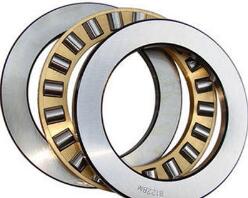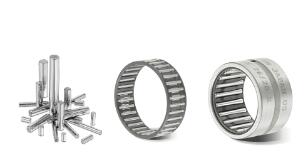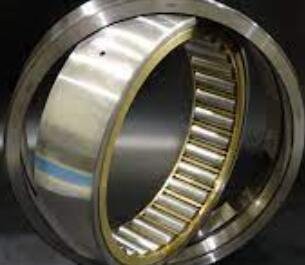A Quick and Easy Guide to Needle roller thrust bearings in 2023
This guide to needle roller thrust bearings provides quick and easy answers to your questions in 2023.
Learn the basics and find out how to use them to maximize efficiency.
As the world of engineering and manufacturing grows in complexity, there's an ever-growing need to understand the basics of needle roller thrust bearings.
This quick and easy guide will provide an introduction to the technology and its uses.
Needle roller thrust bearings are ideal for applications that require high axial rigidity and low friction.
These bearings are especially useful for applications with limited space and require high radial load-carrying capacity.
They are well-suited for use in automotive, industrial, and aerospace applications.
This guide will help you understand needle roller thrust bearings and how to choose the right one for your needs.
Learn about the features, benefits, and the best way to maintain them for long-lasting, reliable performance.

Define what needle roller thrust bearings
Needle roller thrust bearings are a type of bearing that is used in a variety of mechanical applications.
They are designed to support axial loads and reduce the friction between surfaces that are in contact with one another.
These bearings are composed of small, cylindrical rollers that are fitted into a cage.
This allows them to rotate freely while providing support and reducing friction.
They are typically used in applications that require high speed and low friction.
Components of a Needle Roller Thrust Bearing

1.Inner race:
The inner race of a needle roller thrust bearing is a thin-walled cylinder that houses the rollers and is located between the two thrust plates.
It is made of hardened steel and is highly precise for accurate alignment and uniform distribution of load.
It is a thin metal sleeve that houses the needle rollers and serves as the contact surface for the bearing.
It is typically made from case-hardened or hardened steel and has a circular cross-section with a small radius on the inner diameter.
The surface of the inner race is often ground or polished to ensure a smooth running surface for the needle rollers.
The inner race also serves as the mounting surface for the bearing and is typically drilled and tapped for mounting bolts or screws.
The inner race of a needle roller thrust bearing plays a key role in its performance and reliability.
It provides a secure mounting for the needle rollers and helps to control the bearing's radial clearance.
Additionally, the inner race helps to contain the lubricant that helps to reduce friction and wear, which in turn helps to extend the bearing's life.
Finally, the inner race helps to protect the bearing from contaminants and other debris that can cause premature bearing failure.
2.Outer race:
The outer race of a needle roller thrust bearing is the outermost component of the bearing.
It is typically made of steel and is cylindrical. It houses the needle rollers and provides a bearing surface for them to roll against.
It also provides housing for the inner race and the needle rollers.
The outer race of a needle roller thrust bearing is typically made from hardened steel, such as carbon steel or stainless steel.
The outer race has a cylindrical bore and is designed to be mounted in a housing or onto a shaft.
The outer race typically has a ground or machined finish to ensure a precise fit and to minimize friction between the bearing components.
The outer race is also typically designed to be self-aligning and to absorb any misalignments that may occur during installation.
3.Needle rollers:
Needle roller thrust bearings are a type of rolling-element bearing with cylindrical rollers.
These rollers, also known as needle rollers, are longer and thinner than standard rollers and have a higher load capacity for their size.
Needle roller thrust bearings are composed of a set of cylindrical rollers, each with a rounded end, which is arranged in a cage between two flat washers.
The rollers are held in place by a cage or retainer, which helps maintain their spacing and shape.
The rollers are usually made of high-carbon steel and are hardened for strength and durability.
They are typically designed to operate with low friction and are resistant to wear and tear.
The rollers are designed to have a slightly tapered shape, which helps reduce friction and improves bearing performance.
The rollers are generally designed to have a low cross-section, which helps reduce weight and improve the bearing’s overall performance.
They are typically used in applications with high radial loads and low axial loads and are commonly used in automotive and industrial applications such as transmissions, engines, and power steering systems.
4.Cage:
A needle roller thrust bearing cage is a component of a roller thrust bearing that houses and separates the rolling elements.
The cage also keeps the rolling elements evenly spaced and helps to maintain the bearing's internal clearance.
It is typically made of a lightweight, strong material such as steel, aluminum, or plastic.
A needle roller thrust bearing cage typically consists of two stamped steel outer rings and several precision-machined inner rings.
The rings are typically held together with a combination of rivets and press fits, which provide a rigid structure that can withstand the thrust loads experienced by the bearing.
A needle roller thrust bearing cage is an essential component of a needle roller thrust bearing, allowing for smooth operation and reduced friction.
The cage also typically features an oil groove to provide lubrication to the bearing surfaces.
Advantages of Needle Roller Thrust Bearings

1.Compact design allows for use in limited-space applications
Needle roller thrust bearings are capable of taking axial loads in one direction, making them an ideal choice for limited-space applications.
The small cross-section of the bearing allows for installation in tight spaces, as the bearing has a very low profile.
The bearings are also able to operate at higher speeds, allowing for greater efficiency in limited-space applications.
The small diameter of the needles reduces the frictional torque, making them efficient in applications where space is limited.
The design of the bearing also reduces the amount of material needed to construct the bearing, allowing for a lighter and more compact design.
2.Lightweight
A needle roller thrust bearing is a rolling-element bearing that uses small cylindrical rollers.
These bearings are advantageous because they are relatively lightweight, yet still able to support high axial loads.
Due to their small size, needle roller thrust bearings are much lighter than traditional thrust bearings, making them ideal for use in applications where weight is a concern.
This is important in applications where weight and space are both factors, as the bearings can be used without adding significant weight to the system, making them ideal for use in airplanes and vehicles.
Furthermore, their lightweight design also helps reduce friction and wear, which further increases their longevity and reliability.
3.High load-carrying capacity
Needle roller thrust bearings are known for having a high load-carrying capacity.
This is due to the large number of small diameter rollers that make up the bearing and the ability of the bearing to handle high axial loads, which is the direction along the axis of the bearing.
The needles are evenly distributed, reducing the contact surface area and allowing the bearing to handle higher loads than other types of bearings.
Their high load-carrying capacity helps to reduce the overall size and weight of the system, resulting in a more compact and cost-effective design.
4.Long service life
The needle roller thrust bearing is an incredibly durable piece of machinery, with a long service life.
It has a low-friction design and is made from high-grade materials, making it resistant to wear and tear.
The bearing is designed with a high load capacity, which gives it a long operational life.
It also has a low torque requirement, which reduces the amount of energy needed to operate the bearing and increases its durability.
The needle roller thrust bearing is an ideal choice for many applications, as its long service life ensures it will remain reliable and efficient for many years to come.
Disadvantages of Needle Roller Thrust Bearings
1.Limited ability to handle radial loads
Needle roller thrust bearings are an important type of bearing used in many applications, however, they have a limited ability to handle radial loads.
This is because they are designed primarily to handle thrust loads.
Therefore, when radial loads are present, the bearing may be subject to more wear and tear and may fail prematurely.
To avoid this, radial loads should be minimized or eliminated in the application.
If radial loads must be present, then a different type of bearing should be considered to ensure that the application runs smoothly and efficiently.
2.Limited tolerance for misalignment
Needle roller thrust bearings are designed with very limited tolerance for misalignment.
If the bearing is not installed perfectly parallel, it can cause premature failure due to increased friction and excessive wear.
The misalignment can be caused by incorrect installation, improper maintenance, or improper loading of the bearing.
In some cases, even a small amount of misalignment can reduce the bearing’s life significantly.
It is important to take proper care when installing and maintaining a needle roller thrust bearing to ensure it is aligned correctly and will last as long as possible.
3.May produce higher levels of noise and vibration compared to some other types of bearings
Needle roller thrust bearings may produce higher levels of noise and vibration compared to some other types of bearings, such as ball bearings.
This is due to the design of these bearings, as the small cylindrical rollers and the cage that holds them in place can generate higher levels of friction than the smooth, round balls that make up a ball bearing.
This can create a louder noise and a greater amount of vibration.
The higher noise and vibration can be beneficial in certain applications, such as when a high level of vibration is required to separate two pieces of material.
Although the higher noise and vibration can be useful in some applications, it can be detrimental in other applications where a quieter and smoother environment is required.
Maintenance of Needle Roller Thrust Bearings
Needle roller thrust bearings are a type of bearing commonly used for heavy loads and high speeds.
Proper maintenance is essential for their longevity and performance.
-1.Regular inspections should be done to check for signs of wear or damage.
-2.The bearing surfaces should be kept clean and lubricated with light oil or grease.
-3.Any debris should be removed from the bearing surfaces, and the bearings should also be re-lubricated after a while.
-4.It is also important to store the bearings in a dry environment and to keep them away from extreme temperatures and humid conditions.
Following these steps will ensure that the needle roller thrust bearings will perform optimally and last for a long time.
Needle roller thrust bearings are a critical component of many machines and equipment, so they need to have a regular maintenance schedule to ensure they continue to operate effectively and safely.
Without regular maintenance, the bearings may become worn or contaminated, leading to premature failure or other problems.
Maintenance can help to identify small problems before they become major issues and can also help to keep the bearings in good working order so that they can continue to perform their intended functions.
Regular maintenance can also help to extend the life of the bearings and help to avoid costly repairs or replacements.
Conclusion
Needle roller thrust bearings have come a long way and have become an integral part of many industries, from automotive to aerospace, and are now widely used in many applications.
With their ability to handle high loads, low friction, and high speed, needle roller thrust bearings are an essential component for many machines.
As technology continues to improve, needle roller thrust bearings will become even more reliable and cost-effective in the years to come.





